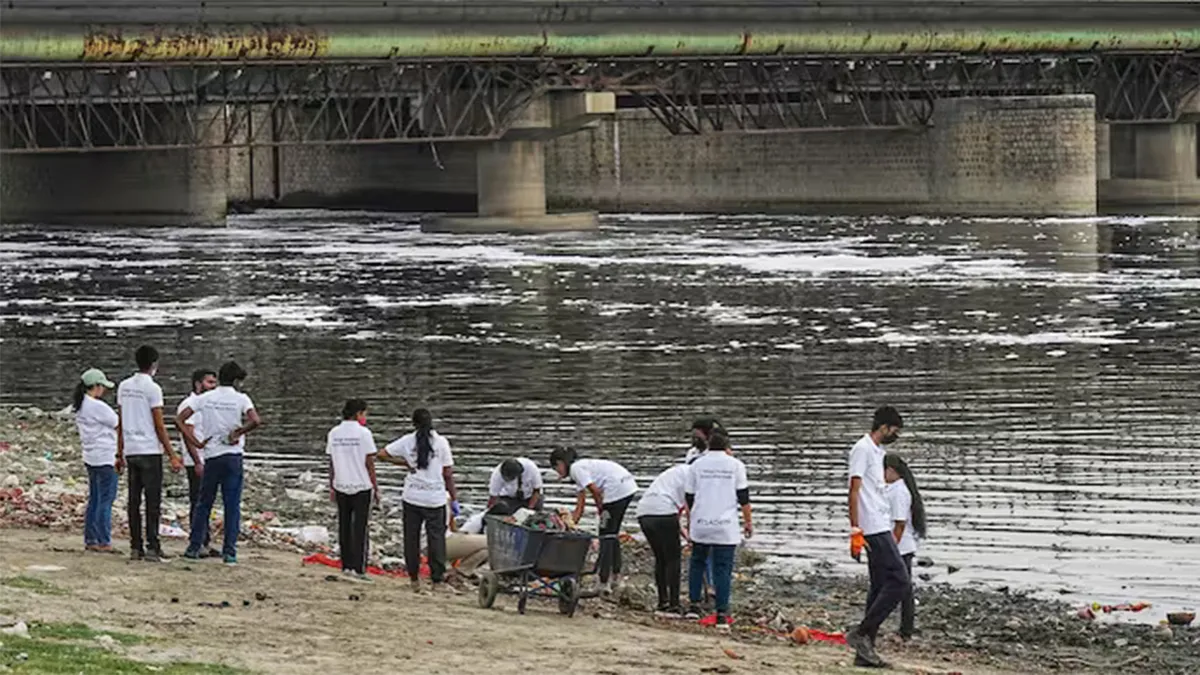
Delhi-NCR residents are banding together to revive the ailing Yamuna. To bring attention to the poor situation of the river, which is beset by pollution and deterioration, a group of concerned individuals is organising hundreds of people to create a 22-kilometer human chain on the banks of the Yamuna on June 4. The chain will run from Delhi's Wazirabad to Okhla, a 22-kilometer length that is responsible for 75% of the river's pollutant burden. 22 drains discharge into this stretch of river. According to the members of the "Yamuna Sansad," a movement started by environmentalists, conservationists, academics, and researchers aiming to revitalise the river, this will likely be the largest such attempt to educate the people of Delhi and assure their participation in cleaning the Yamuna.
According to experts, the major causes of the high levels of pollution in the river include untreated waste water from illegal colonies and jhuggi-jhopri clusters, as well as the poor quality of treated waste water released by sewage treatment plants (STPs) and common effluent treatment plants (CETPs). If the biological oxygen requirement is under three milligrammes per litre and the dissolved oxygen level is above five milligrammes per litre, the river can be regarded safe for swimming.
The Yamuna Sansad coordinator, Ravishankar Tiwari, said that this will likely be the greatest effort to date to educate Delhi residents about the Yamuna's current condition. According to Tiwari, the Yamuna Sansad will continue to function till the river is clean. He further stated that political parties had backed the initiative. The campaign demands that encroachments on river floodplains be removed, the sewer system and STPs in the capital be improved, direct industrial effluent discharge into the river in Haryana and Delhi be stopped, biodiversity parks be developed on the floodplains, environmental flow be ensured, and polluters be made to pay.
